10 Tips to Make Your Product Stand Out
By: phase1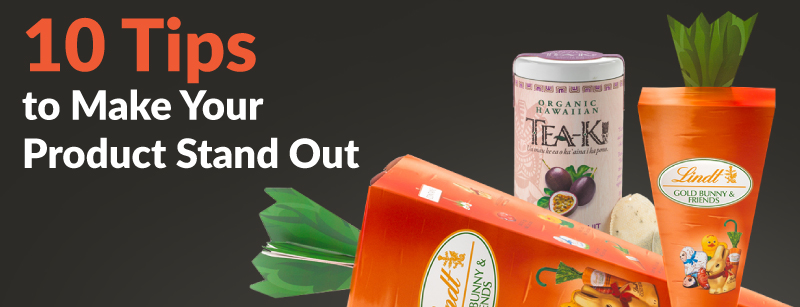
When it comes to new product launches, it’s commonly believed as many as 95 percent of new products(1) fail every year. While some argue that estimated failure rate is too high, the truth is many new product launches belly flop.
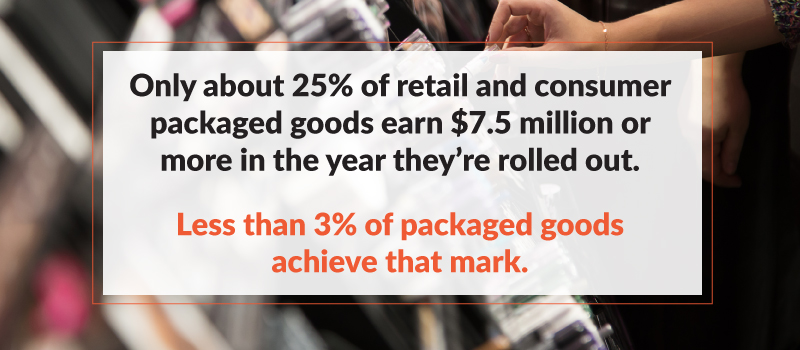
Only about 25 percent of retail and consumer packaged goods(2) earn $7.5 million or more in the year they’re rolled out, meaning 75 percent fail to reach that benchmark. The standard for a product launch viewed as highly successful is $50 million in sales in the product’s first year. Less than three percent of packaged goods achieve that mark.
While the standards for a successful product launch are relative — some organizations would consider a product that made $3 million after an investment of just $30,000 wildly successful — the fact remains most new packaged products fail. From shoppers tending to buy the same things to a lack of sales support, poor quality and more, there are plenty of reasons a product might fail.
One reason that may be behind a product’s failure that’s often overlooked is the product’s packaging. Even if it’s not solely responsible for a product being a flop, packaging may still be a significant contributing factor.
The Importance of Product Packaging
From the viewpoint of both consumers and manufacturers, product packaging is extremely important. Packaging plays, or should play, several key roles. It should protect a product during shipping, on store shelves and in a consumer’s home or workplace, for example.
A product’s package is often a consumer’s first interaction with the product. For this reason, it’s critical for a product’s package to attract the attention of shoppers as the product sits on store shelves. Catching someone’s attention alone isn’t enough, however.
Packaging must also convey information about the product it contains, such as nutrition information and instructions about how the product should be used. This information, along with the overall aesthetic of the package, should be relevant and meaningful enough to convince consumers to buy the product without requiring them to consult a store clerk.
Packaging should successfully differentiate one product or product line from a competitor’s as well. When done correctly, a product’s packaging will instantly be associated with the brand that made it because it will have the brand’s familiar colors, logo and overall style.
Packaging should reinforce a company’s brand, too. When it does, it makes it more likely consumers will buy a new product produced by the business because the packaging signals the product was made by a brand they already trust.
Tips for Making Your Product Stand Out
While you may understand the importance of packaging, you may still struggle with how to make your products stand out on store shelves. Fortunately, you can use some simple tips to make your packaging grab the attention of shoppers. Keep reading to learn 10 tips you can use to make your product stand out from its competitors.
-
Use a Simple Yet Professional Design
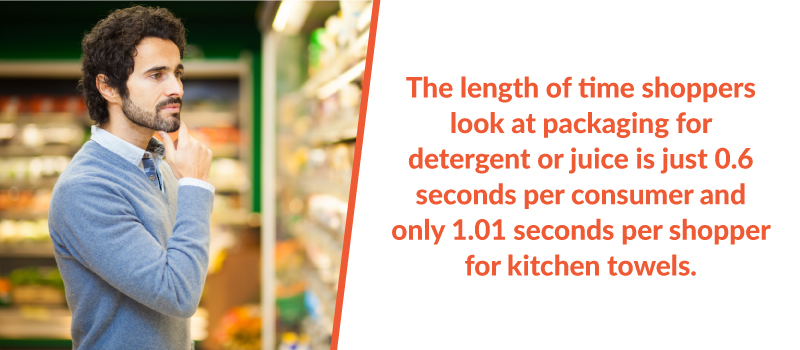
The period of time your packaging has to catch the attention of shoppers is extremely short. According to one study, the length of time shoppers look at packaging for detergent or juice is just 0.6 seconds per consumer(3) and only 1.01 seconds per shopper for kitchen towels. Because consumers spend so little time looking at products when they’re shopping, it’s vital for your packaging to attract their attention and convey your messaging quickly.
You can do this by using a simple yet professional package design. To keep things simple, try these tips:
- Avoid making your product packages too busy with unnecessary graphics or text.
- Employ a font that’s easy to read and images, logos and colors that are in line with your overall brand.
- Don’t put more than two different fonts on one product package.
- Make sure your packaging communicates your product’s best characteristics and relays your company’s values without overwhelming shoppers.
For consumers to consider buying your product, you need a package that demonstrates your product is a serious contender for their attention and money. You can achieve this with a professional package design that clearly communicates your product’s value and explains how it differs from other goods that are similar. Even if you’re on a tight budget, you can still create a professional product packaging prototype design without resorting to clip art or stock photos, which will cheapen the appearance of your package.
-
Design for Your Industry
What would you think if you saw ground beef packaged in a container that had pictures of fruit all over it? What about candy in a package that displayed a picture of a hairbrush? While those two examples are far-fetched, they demonstrate the importance of coming up with a creative product packaging prototype that is relevant for your industry.
While you want to create a product packaging prototype suitable for your industry, it doesn’t mean you have to do what your competitors are doing. Review your industry and what consumers expect from packaging when they buy products like yours, and use that information to create a relevant, workable package prototype.
-
Target Your Ideal Customer Group Through Your Packaging
You know who your ideal customers are, right? Use you packaging to target these consumers specifically. Your product is just one sitting on the shelf among a sea of similar goods. This makes it vital for your packages to speak directly to the demographic most likely to purchase your specific product instead of a rival.
Is your product intended for people who suffer from joint pain? Then your packaging should explain how your product can alleviate their daily discomfort faster or for a longer period of time compared to other products. Does your target market consist primarily of children? Use bright colors and images children will relate to on your package, such as cartoons or characters from popular children’s movies.
-
Use the Psychology of Colors When Choosing Colors
As you’re trying to come up with a creative product packaging prototype design, it’s important for you to consider the psychology of color. Over the time the psychology of color has been studied, it’s been proven again and again that different colors influence a person’s emotions differently. This means you need to choose colors that will evoke the emotions you want consumers to have when they look at your packaging.
You wouldn’t want to choose colors that induce the feeling of heaviness if you’re selling a teddy bear that’s supposed to put a smile on a child’s face. Similarly, you wouldn’t want to use a color that communicates levity or humor if your product is intended to save lives.
Here are some colors that are commonly used on packaging and the emotions typically associated with them:
- White: Innocence, purity and simplicity
- Black: Control, power, weightiness and costliness
- Red: Excitement
- Yellow: Happiness
- Green: Growth, harmony and eco-friendliness
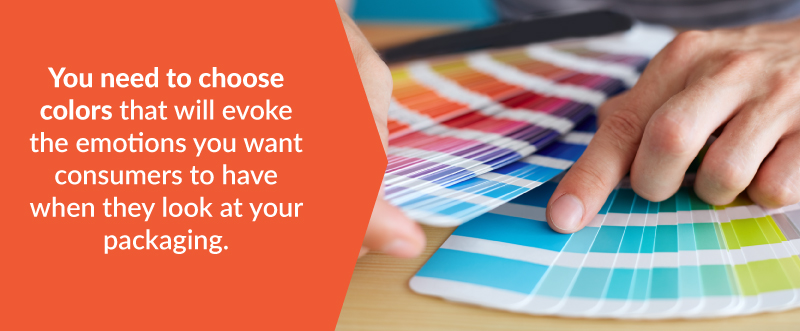
While choosing colors is important, it’s just as critical to choose the right shades of colors, because different shades of one color can evoke different emotions. While the color red generally denotes excitement, dark red can convey anything from vigor to rage, courage, malice and revenge. Light red, on the other hand, often makes people think of passion, happiness and love.
-
Precise Product Packaging Planning
Packaging prototype design isn’t something you can do successfully if you do it willy-nilly. While you don’t have to stress yourself out while you’re creating a package prototype, you do have to plan your approach to making effective packaging precisely.
Developing packaging is a process that includes many key steps that simply shouldn’t be skipped. Here are some of the critical steps involved in the packaging development process:
- Developing a strategy and concept
- Creating a package design and prototype
- Testing the feasibility of the prototype
- Confirming the exact specifications of your packaging for development
- Sourcing manufacturers that can produce your packaging
- Managing the production and use of your packages
-
Show Customers What to Expect Through Your Packaging
It’s critical for your packaging to accurately communicate what shoppers can expect if they purchase your product. Very few consumers will make a subsequent purchase if your packaging promises one thing and your product delivers something else entirely.
If your packaging says your product is effective at removing soap scum from bathroom tile, make sure your product actually does so. If your product is birthday candles that can’t be blown out, don’t include a picture of someone extinguishing them with their breath on your package.
The key is to make sure consumers won’t be disappointed by a disconnect between your packaging and your product. While you want shoppers to be surprised by the quality of your goods and accuracy of your packaging, you don’t want them to be shocked by how misleading the information on your packaging is.
-
Include Directions in Text or Imagery
Just like you don’t want your packaging to surprise consumers with inaccurate information, you also don’t want to leave shoppers wondering how to use your product. To prevent this from happening, you should include instructions that tell people how to use your goods on your product packages.
If your target market consists largely of adults, you may want to use text to convey your instructions. If your ideal customer is a child or explaining how to use your product with words will consume too much space, you might want to provide directions using images instead. When consumers know how to use your goods, it’s more likely they’ll make room for them in their home or workspaces.
-
Think Green for Your Product Packaging
In recent years, consumers have made it resoundingly clear they have a lasting interest in purchasing eco-friendly products that are delivered in packaging that’s just as environmentally friendly. Even if the product itself isn’t eco-friendly, many shoppers still want the product’s package to be recyclable and/or made from recycled materials.
Customers often feel like they’re helping the earth and preserving the environment when they buy green products, something that’s important to many people. You can help your customers feel like they’re making a difference while making your products distinctive by using green packaging for your goods. Your product will stand out even more if your competitors aren’t using eco-friendly packages for their goods.
If you use green packaging, let consumers know directly on your package. If your packaging is recyclable, you should consider including the widely recognized recycling symbol on your package along with a few words encouraging people to recycle your product packaging instead of tossing it in the trash. Doing these things will help convey your concern for the environment and show you value eco-friendliness just like your customers do.
-
Dare to Be Different
As we stated earlier, it’s important to develop a creative product packaging prototype design relevant to your industry, but that doesn’t mean you have to do what everyone else selling a similar product is doing. While your product might be similar to others, it’s still different, and your packaging should be, too.
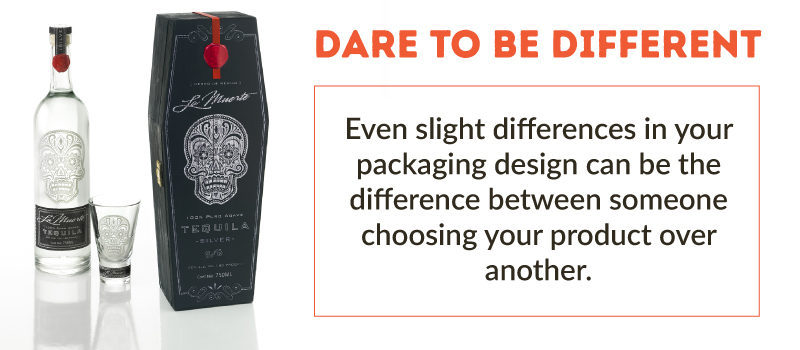
If you’re concerned about breaking the mold, so to speak, don’t be. Even slight differences in your packaging design can be the difference between someone choosing your product over another. Consider this story from the soda industry:
- Decades ago, when Coca-Cola was still relatively new, the soda manufacturer struggled with maintaining the distinction between its soda and its competitors’ beverages, largely because the soda maker’s competitors used the same kind of bottles for their drinks.
- After years of litigation that did little to stop Coca-Cola’s competitors from using bottles that often deliberately misled people into thinking they were drinking Coca-Cola when they really weren’t, Coca-Cola switched to a ribbed bottle protected by a patent filed by the bottle’s creator.
- Less than 50 years after the soda giant’s distinct bottle went into production, the bottle was recognized as a trademark in 1961.
- Why did the now iconic Coca-Cola bottle receive this coveted distinction? It’s partly due to the fact that by 1949 less than one percent of Americans couldn’t identify a bottle of Coca-Cola(4) based solely on the bottle’s shape.
Coca-Cola dared to be different with its packaging, and you should, too.
-
Tell Your Story
The story of how your company and product came to exist is uniquely yours. You can use your story to connect with shoppers and instill trust in your brand and individual products. When shoppers know your backstory, it increases the likelihood they’ll associate your brand and products with something meaningful they can relate to.
Take Advantage of Product Prototyping Design
As you develop a product package, it’s critical you gain the benefits of smart packaging prototype design. Contact Phase 1 Prototypes to have mock-ups of your packages made, which you can test in focus groups to ensure your packaging hits all of the right notes with consumers.
Unlike our competitors, we don’t require our clients to order a minimum number of prototypes. If you need 10,000 prototypes or less than 500, we’ll get your prototypes to you in three days or less once we receive approved finals from you. Need your prototypes sooner? If it’s physically possible, we’ll meet your deadline no matter how condensed it is.
We have the proven experience to bring your packaging designs to life even if they involve new materials, shapes or textures. Our motto is, “Your vision, realized,” because that’s exactly what we do — we make your packaging vision a reality.
We know our clients are eager to bring their products to market quickly, which is why we won’t keep you waiting. If you contact us during business hours, we’ll be in touch within an hour. When you request a quote, we’ll send one to you in 24 hours or less.
While our tips can certainly help your product to stand out on even the most crowded store shelves, the only way to accurately gauge the effectiveness of your packaging is to test it. Contact Phase 1 Prototypes and let us realize your vision today.
Sources:
(1) “Why Your Product’s Packaging Is as Important as the Product Itself” by Joshua Conran (www.inc.com)
(2) “Why Most Product Launches Fail” by Joan Schneider and Julie Hall (hbr.org)
(3) “Tue 5.1 Shoppers’ Attention to Packaging and In-Store Media” By Linberg, Lindstrom, Cederstrom, From, and Westerlind (www.inventia.com)
(4) “The Story of the Coca-Cola Bottle” by Ted Ryan (www.coca-colacompany.com)

Leave a Reply